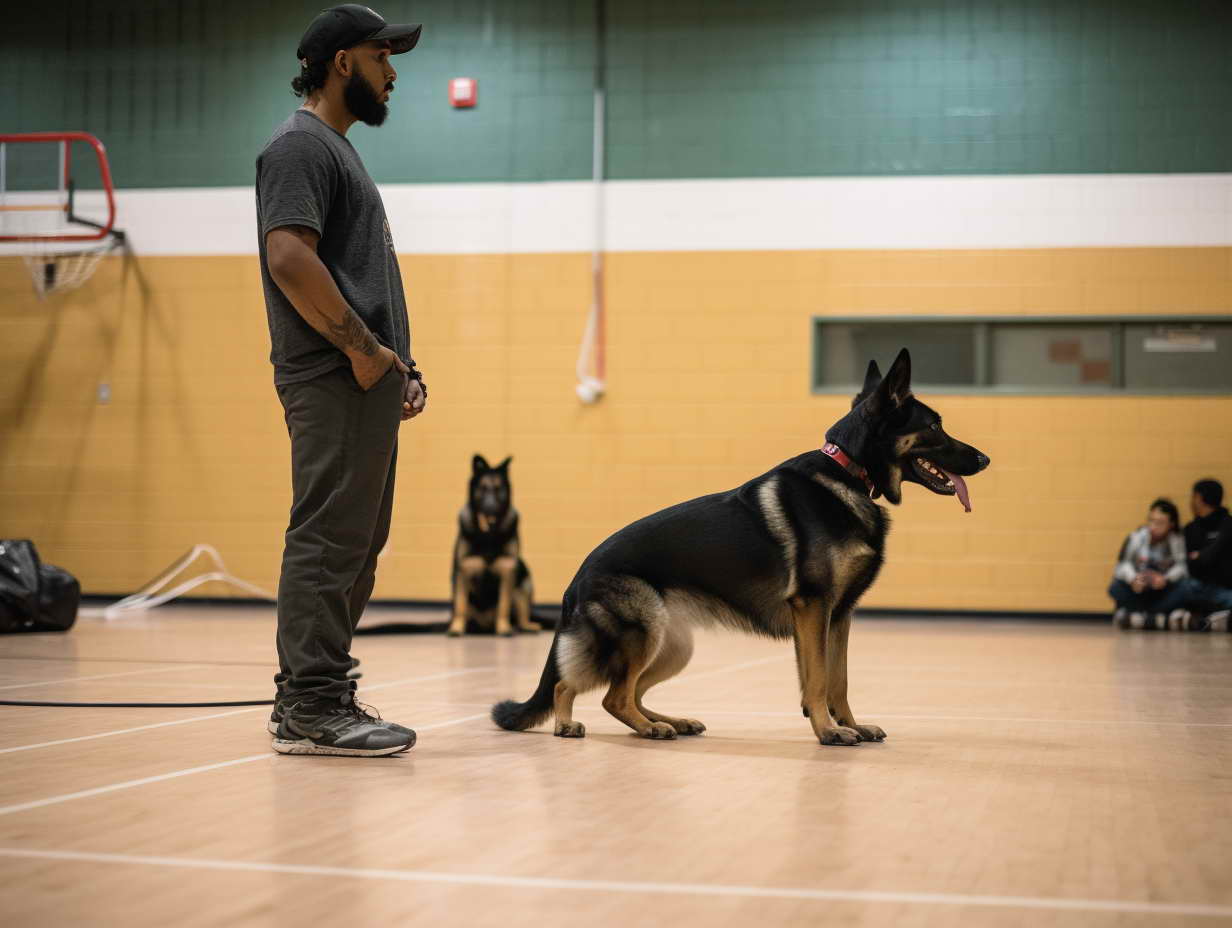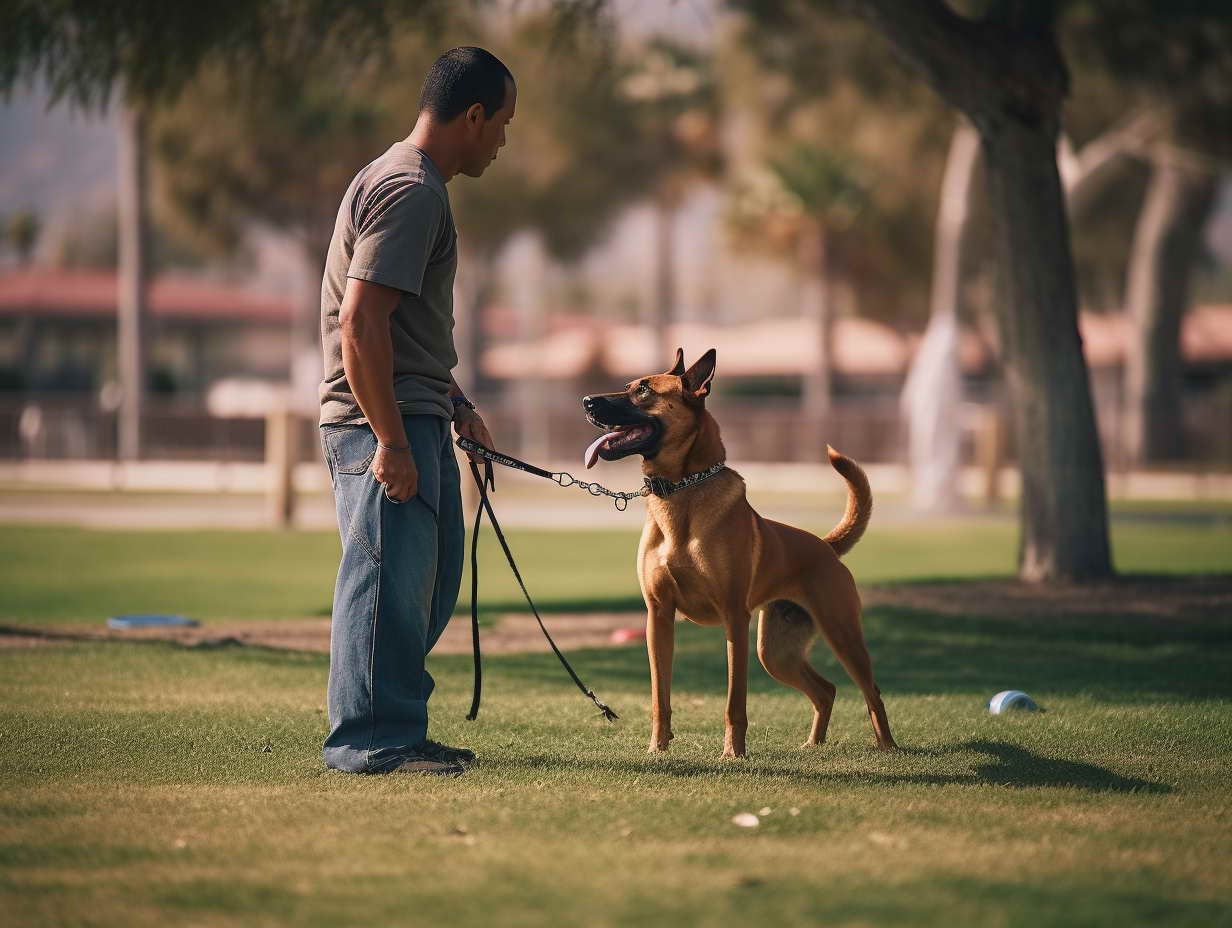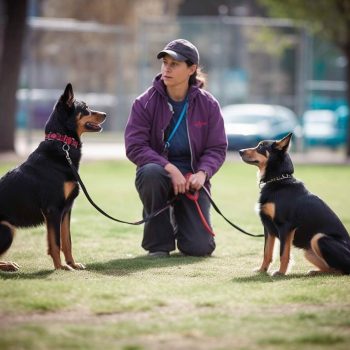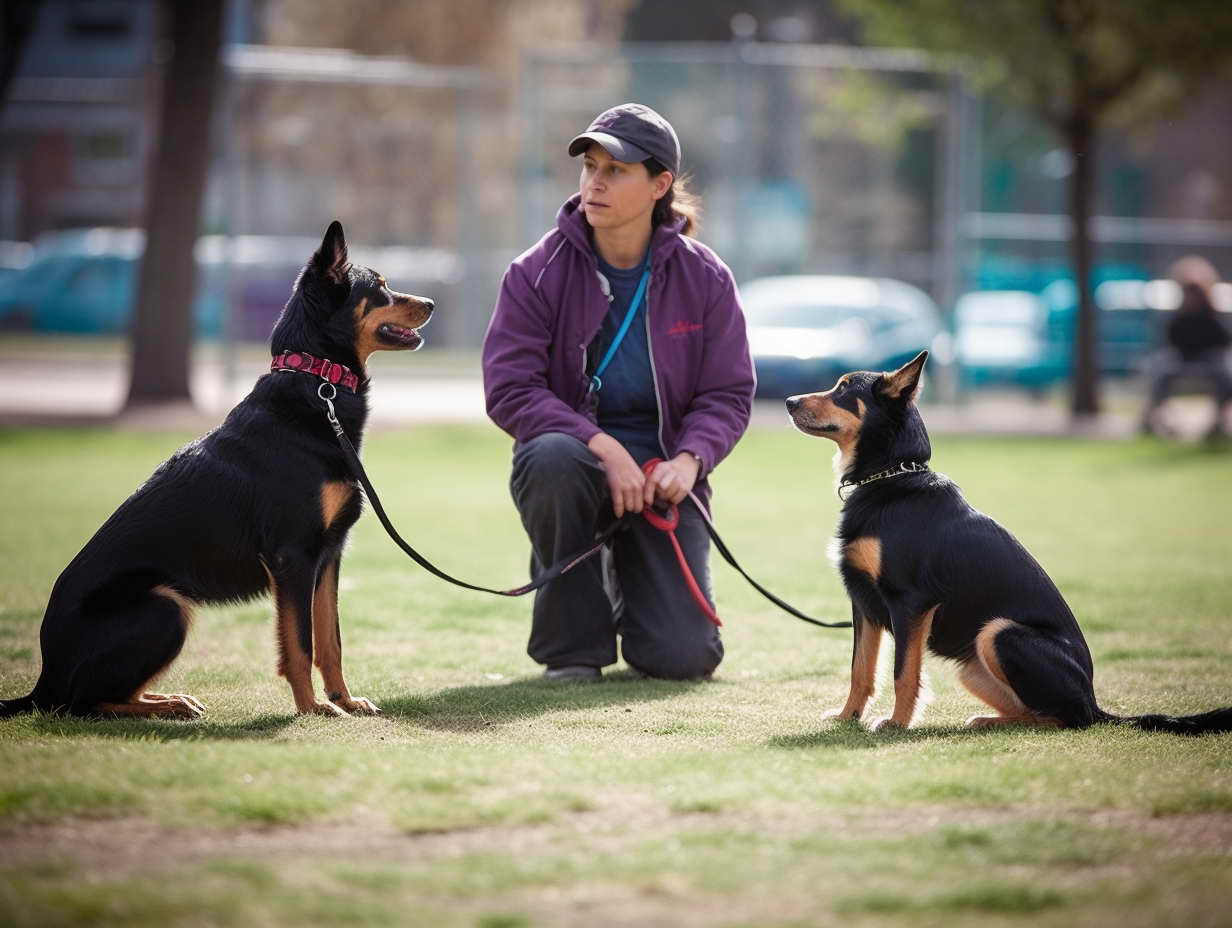Precision Dog Training Guide and Costs: A Comprehensive Approach to Training Your Canine Companion
Welcome to the Precision Dog Training Guide and Costs, your comprehensive resource for training your four-legged friend with precision and care. As every dog owner knows, a well-trained dog is a happy and well-adjusted companion. Proper training not only fosters a strong bond between you and your furry friend but also ensures a harmonious and enjoyable coexistence.
In this guide, we’ll walk you through various training techniques, from basic commands to advanced skills, all designed to bring out the best in your canine companion. Additionally, we’ll explore the associated costs to help you make informed decisions on the best training options for your budget. So, let’s embark on this exciting journey of building a stronger and more rewarding relationship with your furry friend!
I. Understanding the Importance of Training
Before diving into the specific training techniques, let’s first explore why dog training is vital for the overall well-being of your pet.
As pack animals, dogs have a natural inclination to follow a leader. By establishing yourself as a benevolent and confident leader, you create a sense of security for your dog, which, in turn, reduces anxiety and fosters good behavior. Proper training also enhances communication between you and your pet, making it easier for you to convey your expectations and understand their needs.

II. The Fundamentals of Dog Training: Building a Strong Foundation
When it comes to training your beloved canine companion, laying a solid foundation is crucial for success. The fundamentals of dog training provide the groundwork upon which you can build more advanced skills and behaviors. Let’s delve deeper into these fundamental techniques:
A. Positive Reinforcement Training: A Rewarding Approach
Positive reinforcement is a widely acclaimed training method based on the principle of rewarding desired behaviors. This approach focuses on encouraging your dog to repeat actions that lead to positive outcomes. Rather than using punishment or correction-based techniques, positive reinforcement relies on the power of rewards to motivate your furry friend.
To implement positive reinforcement, follow these steps:
- Identify Desired Behaviors: Decide which behaviors you want to reinforce, such as sitting, lying down, or coming when called.
- Choose Appropriate Rewards: Find out what treats, toys, or verbal praise your dog finds most enticing. Tailor the rewards to suit your pup’s preferences.
- Timing is Key: Deliver the reward immediately after your dog exhibits the desired behavior. This instant reinforcement strengthens the association between the action and the positive outcome.
- Be Consistent: Consistency is paramount in positive reinforcement. Reward your dog each time they perform the desired behavior until it becomes ingrained.
B. Clicker Training: A Sound for Success
Clicker training is a specialized form of positive reinforcement that utilizes a small handheld device, the clicker, to mark desired behaviors. The clicker emits a distinct and consistent clicking sound that serves as an instant signal to your dog, indicating that they have performed the correct action.
Here’s how to get started with clicker training:
- Introduce the Clicker: Associate the clicker with rewards by clicking it and immediately offering your dog a treat. Repeat this several times to create a positive association.
- Timing is Everything: Use the clicker to mark the precise moment your dog exhibits the desired behavior, followed by an immediate reward.
- Practice Makes Perfect: Consistent practice is essential in clicker training. Gradually increase the complexity of behaviors and reward your dog for achieving each milestone.
- Fade Out the Clicker: Once your dog has learned the desired behaviors, you can gradually phase out the clicker while continuing to use verbal praise and rewards.
C. Crate Training: A Safe Haven
Crate training provides your dog with a safe and comfortable space they can call their own. While some may see crating as confining, when done correctly, it becomes a secure retreat for your pup. Dogs are den animals by nature, and a well-introduced crate serves as their den in your home.
To introduce crate training effectively:
- Choose the Right Crate: Select a crate that is large enough for your dog to stand, turn around, and lie down comfortably. Avoid crates that are too spacious, as dogs prefer a cozy and snug den-like environment.
- Positive Association: Make the crate a positive space by placing treats, toys, and comfortable bedding inside. Encourage your dog to explore the crate voluntarily.
- Gradual Introductions: Start by having short sessions with your dog inside the crate, gradually increasing the duration. Always reward them for entering and remaining calm inside.
- No Forced Confinement: Never force your dog into the crate or use it as a punishment. The crate should always be associated with positive experiences.
D. Leash Training: Mastering the Walk
Leash training is essential for ensuring pleasant walks with your dog and preventing common behavior issues, such as pulling or lunging. A well-behaved leash-trained dog not only makes your strolls enjoyable but also keeps both you and your pet safe.
Follow these tips to master leash training:
- Start Early: Begin leash training as soon as you bring your puppy home. Older dogs can also be leash trained with patience and consistency.
- Proper Equipment: Use a sturdy and comfortable leash and collar or harness. Avoid retractable leashes for training, as they offer less control.
- Stay Consistent: Walk with a consistent pace, and gently correct any pulling. Reward your dog when they walk beside you without pulling.
- Positive Walks: Make walks enjoyable by allowing your dog to explore, sniff, and have some freedom (without pulling). Use treats and praise to reinforce good walking behavior.
E. Obedience Training: Building the Basics
Obedience training forms the core of a well-behaved dog’s repertoire. Basic commands like “sit,” “stay,” “come,” and “down” are essential for your dog’s safety and your ability to communicate effectively.
Here’s how to get started with obedience training:
- One Command at a Time: Focus on teaching one command at a time. Be patient and consistent in your training sessions.
- Short and Frequent Sessions: Keep training sessions short and engaging to prevent your dog from getting bored or frustrated.
- Positive Reinforcement: As with other training techniques, use positive reinforcement to reward your dog for correctly following commands.
- Avoid Punishment: Never punish your dog for not following commands. Instead, identify the reasons for the behavior and address any underlying issues.
By mastering these fundamental training techniques, you’ll establish a strong foundation for advanced training and create a well-behaved and happy canine companion.

III. Advanced Training Techniques: Elevating Your Dog’s Skills and Abilities
Once you have mastered the fundamentals of dog training and your canine companion has built a solid foundation of obedience, it’s time to take their skills to the next level with advanced training techniques. These techniques challenge your dog’s physical and mental abilities, promoting a deeper bond between you and your furry friend. Let’s explore the exciting world of advanced training:
A. Agility Training: A Test of Skill and Speed
Agility training is a dynamic and exhilarating canine sport that involves navigating your dog through a timed obstacle course. The course typically consists of jumps, tunnels, weave poles, A-frames, and other challenges that test your dog’s agility, speed, and accuracy.
Here’s how to get started with agility training:
- Basic Obedience Foundation: Before engaging in agility, ensure your dog has a solid foundation in basic obedience commands. This will help them respond to your cues during the course.
- Low-Impact Training: As agility can be physically demanding, especially for young dogs, start with low-impact exercises and gradually introduce more complex obstacles.
- Positive Reinforcement: Use positive reinforcement to encourage your dog during agility training. Praise and treats for completing obstacles will boost their confidence.
- Fun and Bonding: Keep the training sessions fun and engaging to maintain your dog’s enthusiasm for agility. The sport is also an excellent opportunity to deepen the bond between you and your pet.
B. Trick Training: Unleashing Creativity
Trick training is a delightful way to engage your dog’s intellect and show off their impressive skills. Teaching your furry friend fun tricks not only entertains your family and friends but also strengthens the communication between you and your canine companion.
Here are some tricks to teach your dog:
- Shake Hands: Teach your dog to offer its paw for a friendly handshake.
- Roll Over: Encourage your dog to roll over on command, showcasing their acrobatic abilities.
- Play Dead: Teach your dog to feign a dramatic “play dead” response when cued.
- Fetch Specific Items: Train your dog to fetch specific items by name, such as their favorite toy or a newspaper.
C. Scent Detection Training: The Canine Detective
Scent detection training taps into your dog’s extraordinary sense of smell, allowing them to identify and locate specific scents. This type of training is not only mentally stimulating but can also lead to practical applications, such as search and rescue work or even participating in scent detection trials.
Follow these steps to get started with scent detection training:
- Choose a Scent: Select a specific scent, such as essential oil or a unique item, to introduce to your dog during training.
- Associate with Reward: Pair the chosen scent with a reward, such as treats or playtime, to create a positive association.
- Hide and Seek: Begin by hiding the scented item in an accessible location and encouraging your dog to find it. Reward them generously when they succeed.
- Gradual Complexity: As your dog becomes more proficient, increase the difficulty by hiding the scent in harder-to-reach places or more complex scenarios.
D. Canine Freestyle: Dancing with Your Dog
Canine freestyle is a creative and entertaining sport that combines obedience, tricks, and dance elements. With a blend of precision and flair, you and your dog can choreograph routines set to music, showcasing your teamwork and bond.
Getting started with canine freestyle:
- Build on Basic Obedience: A strong foundation in basic obedience is essential for creating smooth and captivating routines.
- Select Music: Choose music that suits your dog’s personality and energy level. The right soundtrack can enhance the emotional connection during performances.
- Incorporate Tricks: Integrate tricks, spins, and other playful movements into your routine. These add flair and showcase your dog’s versatility.
- Positive Reinforcement: Reward your dog generously during practice and performances to keep their enthusiasm high.
E. Canine Sports and Activities: Exploring Diversity
Apart from the specific advanced training techniques mentioned above, there are numerous other canine sports and activities to explore with your furry friend. These may include:
- Flyball: An exciting relay race for dogs, involving teams that jump over hurdles to trigger a tennis ball release.
- Dock Diving: A thrilling sport where dogs compete to make the longest jump into a pool of water from a dock.
- Tracking: Harness your dog’s natural scent-tracking abilities and embark on outdoor tracking adventures.
- Herding Trials: If you have a herding breed, consider participating in herding trials to showcase their innate herding instincts.
Remember, each dog is unique, and not every advanced training technique may suit your pet’s personality or interests. Pay attention to your dog’s preferences, and choose activities that bring joy and fulfillment to both of you.

IV. Assessing Training Costs and Budgeting: Investing Wisely in Your Dog’s Training Journey
As you embark on the journey of training your beloved canine companion, it’s crucial to evaluate the costs associated with different training options and create a well-planned budget. Properly assessing training costs will enable you to make informed decisions that align with your financial resources while ensuring your dog receives effective training. Let’s delve into the key factors to consider when evaluating training costs, along with estimated price details :
A. Professional Training Services: Investing in Expertise
Estimated Cost Range: $50 to $150 per hour
Enlisting the services of a professional dog trainer can be a valuable investment, especially for addressing specific behavioral issues or advanced training needs. The cost of professional training services can vary based on factors such as the trainer’s qualifications, experience, location, and the type of training package you choose.
When evaluating professional training costs, consider the following:
- Qualifications and Experience: Trainers with higher certifications and extensive experience may charge more for their expertise.
- Training Packages: Private sessions usually have higher hourly rates compared to group classes. Board-and-train programs may range from a few hundred to a few thousand dollars, depending on the duration and intensity of training.
- Geographical Location: Training costs in urban areas or large cities may be higher compared to rural regions.
- Training Goals: Complex training goals or specialized training, such as service dog training, may entail higher costs.
B. DIY Training: Nurturing the Bond
Estimated Cost Range: $20 to $100
Training your dog at home through DIY methods can be cost-effective and rewarding. The expenses associated with DIY training mainly revolve around educational resources and training tools.
When budgeting for DIY training, consider these costs:
- Educational Resources: Purchase high-quality training books, online courses, or videos, which typically range from $20 to $50.
- Training Tools: Essential tools like a clicker, treats, and a treat pouch can cost between $5 to $20.
- Time Commitment: DIY training mainly requires your time and patience, but it does not incur additional monetary costs.
- Patience and Perseverance: The success of DIY training relies on your dedication and consistent effort.
C. Training Tools and Equipment: Choosing Wisely
Estimated Cost Range: $30 to $150
Apart from professional training or educational resources, budgeting for training tools and equipment is essential. Invest in high-quality, durable items that contribute to the success of your training efforts.
Common training tools and their approximate costs include:
- Clicker: A clicker typically costs around $5 to $10.
- Treat Pouch: A treat pouch for carrying treats during training can range from $10 to $20.
- Training Treats: High-quality treats may cost between $5 to $15, depending on the quantity and brand.
- Leash and Collar/Harness: A sturdy leash can cost between $10 to $30, while a well-fitting collar or harness may range from $10 to $30.
- Agility Equipment: If you pursue agility training, basic equipment like jumps, tunnels, and weave poles may cost around $50 to $100.
D. Making Informed Decisions
When assessing training costs and budgeting for your dog’s training journey, keep the following tips in mind:
- Research and Compare: Gather information on various training options and compare costs and benefits to find the best fit for your dog’s needs and your budget.
- Prioritize Essentials: Focus on essential training tools and resources that align with your training goals, avoiding unnecessary expenses.
- Balance Cost and Quality: Prioritize quality training over the lowest cost. Investing in professional training or high-quality resources can lead to better long-term results.
- Flexibility: Be open to adjusting your budget as needed. Training progress may vary, and you might need to allocate more resources to certain aspects of training.
By carefully assessing training costs and creating a well-planned budget, you can ensure that you invest wisely in your dog’s training journey, leading to a well-behaved and joyful canine companion.
Frequently Asked Questions (FAQs)
How long does it take to train a dog effectively?
The training timeline varies depending on the dog’s breed, age, temperament, and complexity of the skills being taught. Some dogs may grasp commands quickly, while others may require more time and patience.
Can older dogs be trained effectively?
Absolutely! While puppies tend to be more receptive to training, older dogs can still learn new tricks and behaviors. Patience and consistency are key to successful training regardless of age.
Are there any dog breeds that are harder to train?
Each dog breed has its unique traits and characteristics, influencing their trainability to some extent. However, with positive reinforcement and patience, almost all breeds can be trained effectively.
Should I use punishment-based training methods?
It’s best to avoid punishment-based methods, as they can lead to fear and anxiety in your dog. Positive reinforcement techniques are more effective and create a happy and well-adjusted canine companion.
How do I address behavioral issues during training?
Behavioral issues should be addressed with the help of a professional dog trainer who can assess the situation and provide tailored solutions. Avoid trying to handle severe behavioral problems on your own.
Can I train my dog without using treats?
While treats are commonly used in positive reinforcement training, they can be gradually phased out as your dog becomes more adept at responding to commands. Verbal praise and affection can be sufficient rewards.
Conclusion: Embrace the Journey of Training Your Dog
Training your dog is a rewarding journey that enriches both their life and yours. With patience, consistency, and positive reinforcement, you can unlock your dog’s potential and strengthen your bond beyond measure. Remember to tailor your training approach to your dog’s unique needs, and always prioritize their well-being and happiness.


Leave a Reply